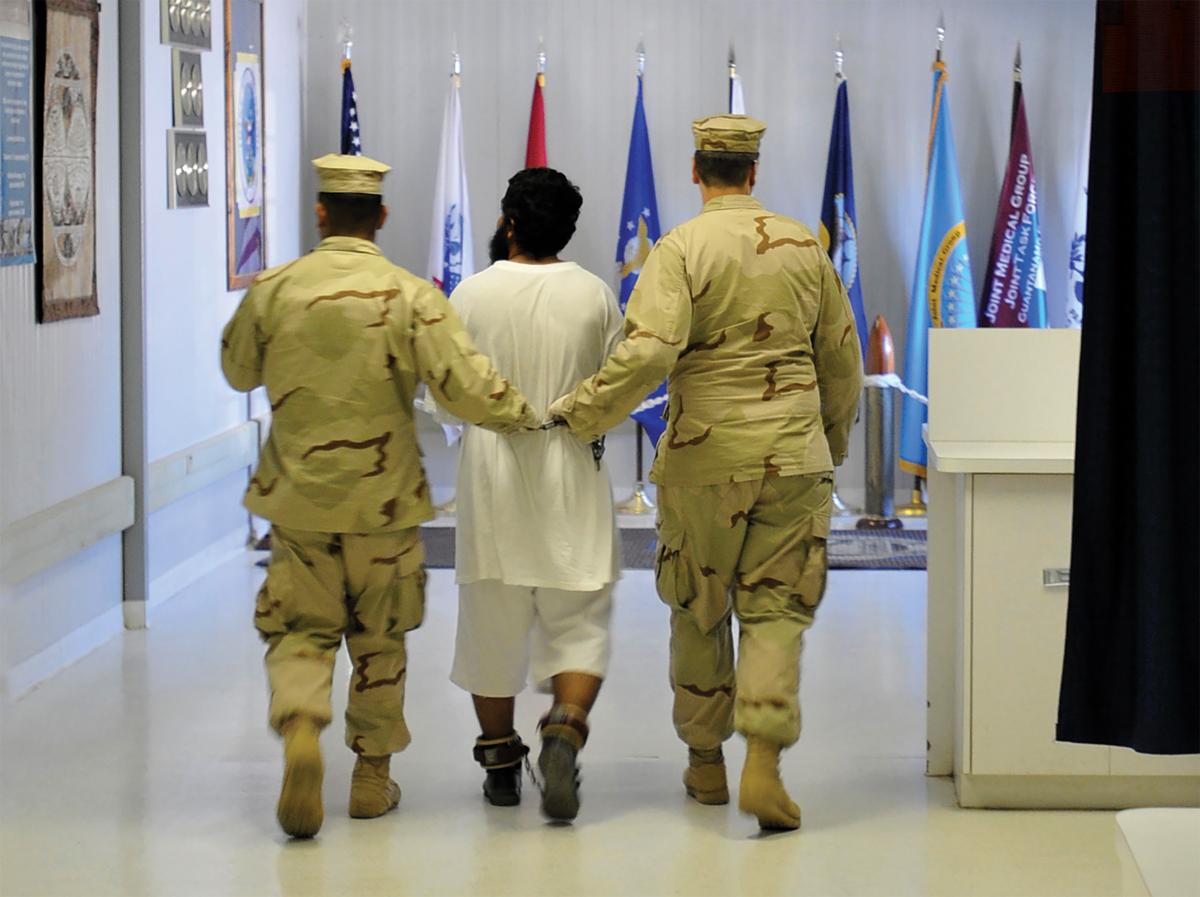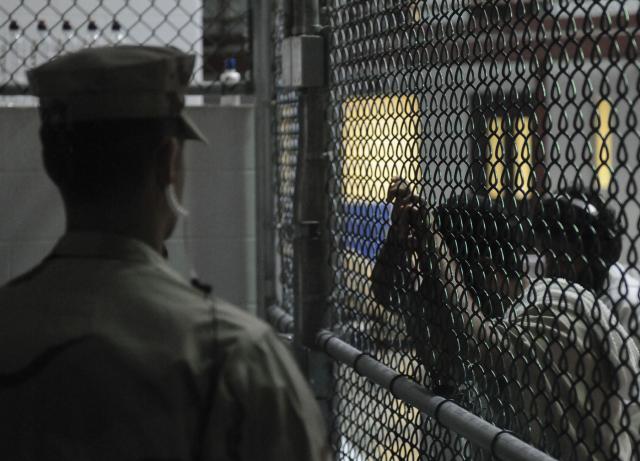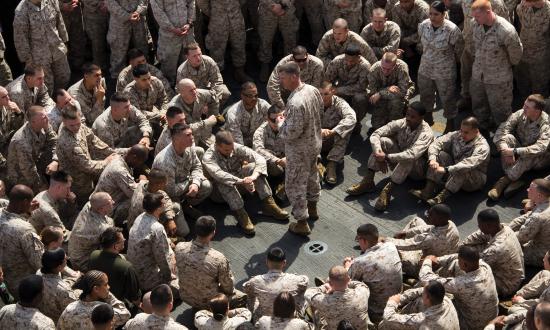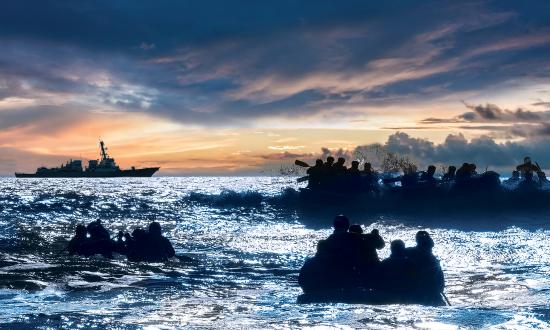Members of the military often feel political leaders do not understand military culture. The President has even said publicly, “We train our boys to be killing machines.” But our soldiers, sailors, airmen, Marines, and Coast Guardsmen are much more than that. Yes, they are highly trained in their craft, but they also are imbued with core values and a duty under the law to conduct war professionally, ethically, and to the maximum extent possible, humanely.
In the spring of 2005, I was tapped for an individual augmentee deployment to lead the second Navy Provisional Guard Force at the enemy combatant detention facility on board the U.S. Naval Station, Guantanamo Bay, Cuba. There, I witnessed firsthand the honorable and courageous commitment of our American sailors, who put the nation and their oaths before everything else.
The Guantanamo Mission
The Navy guard force was sent to Guantanamo to free Army soldiers needed in Iraq. My role was to supervise the organization, training, and equipping of the sailors (all rated masters-at-arms) for their role as detainee guards.
Guantanamo was much more challenging than traditional guard duty at a Navy brig. The majority of the nearly 600 detainees were Muslim, which carried a stigma after 9/11. Many did not speak English. Most were held on dubious pretexts under a detention regime of doubtful legality, fostering a good deal of resentment. It was into this tense environment that the guard force sailors walked.
In addition, 2005 was a difficult year for the U.S. war effort. Not only was the Iraq war going badly, but the armed forces recently had been tainted by the Abu Ghraib scandal and other questionable activities. In this environment, it was doubly important that the Navy guard force perform to the highest standard.
Membership in the guard force did not involve combat or being under fire, but it was by no means easy. Sailor-guards worked 12-hour shifts, four to five days a week. Assigned to groups of five under a master-at-arms first class as leading petty officer, guards continuously walked a block of 40 detainee cells, 20 on each side of a long, narrow corridor. As they walked the blocks, the guards were required to follow to the letter detailed standard operating procedures regarding the care and feeding of and interaction with detainees, all while maintaining a calm, unemotional demeanor.
In 2005–06, most of the cells were in semienclosed, open air blocks, so the guards often worked in hot, humid conditions. In addition, as often happens in prisons and prisoner of war camps, the detainees subjected the guards to various forms of manipulation, harassment, and, occasionally, violence. The guards had to be constantly vigilant for and resistant to this behavior. In other words, we asked young sailors, some no more than 19 years old, to perform perfectly under great stress in a highly visible role in which a single misstep could needlessly harm one or more detainees, further damage the reputation of the United States, and damage the reputation of the Navy. How did they do in the face of these challenges?
Character of Our Sailors
First and foremost, their individual character counted. I worked alongside Navy sailors for 25 years and, throughout that time, I was uniformly impressed by their character, inner strength, and courage. The Navy hires good people, and some of the best served at Guantanamo. What they needed, however, was something to sustain them through the most stressful, most difficult times, when their character was put to the greatest test. The ideals embodied in the Sailor’s Creed and the Navy’s core values were among their most important supports.
Training for the Mission
Sailors were assigned as individual augmentees and reported to the Naval Construction Battalion Center, Gulfport, Mississippi, for one week of orientation and outfitting, followed by three weeks of guard force training conducted by Army military police at Fort Lewis, Washington. The focus of the Gulfport phase was team-building and core values reinforcement. Carol Rosenberg, a long-time beat reporter for the Miami Herald, captured what we were trying to do to prepare the sailors for the challenges ahead:
“Your kids are going to read about this in their history books,’’ Navy Captain Thomas Beall tells the mostly volunteer Navy police force. “We’re writing a new chapter in the history of our Navy—and it’s going to be an honorable chapter.’’
For a year now, military officers at Guantanamo have avoided Abu Ghraib analogies, eschewing it as an American detention anomaly half a world away, in Iraq. But Beall, a 43-year-old former frigate commander, is confronting the Abu Ghraib image as he pioneers the Navy’s first professional, POW-style guard force.
“I do know that it’s different from what sailors have done in the past. I do know it’s under a lot of scrutiny. And I do know that people have screwed it up. All you have to do is look at Abu Ghraib,” he said in an interview.
But, he tells his sailors, the president has authorized the creation of a prison camp at Guantanamo; Congress has approved it and the courts have so far ruled it constitutional even as “the American people are questioning why we’re doing it and how we’re doing it.’’
So he has declared that every sailor guard begin each Guantanamo day by reciting The Sailor’s Creed—I proudly serve . . . with honor, courage and commitment.1
Following a week at Gulfport, the sailors continued their training at Fort Lewis, where Army instructors taught the basics of guard duty, including caring for, feeding, and moving detainees, as well as forced cell extraction of an uncooperative or violent detainee. Sailors also participated in practice scenarios, during which they were subject to verbal and physical abuse. The Army instructor role players knew exactly how to probe the weaknesses of individual sailors to get them to lose their cool. To pass the training, the sailors needed to demonstrate they could master those weaknesses.
One training incident stands out for me. After every scenario exercise, participating sailors would gather for an after-action review with the instructors. Sailors were able to discuss what they had done right and what they had done wrong in a nonthreatening environment. Often the sailors, to their credit, would talk candidly about their mistakes and find ways among themselves to correct them and do better. I always attended these reviews but seldom interjected, preferring to let the sailors identify their own problems and find their own solutions. I would speak up to clarify an issue or to ensure solutions were consistent with how the Navy wanted them to perform in Guantanamo.
At one after-action review, the sailors were having a heated discussion with their instructors over a forced cell extraction of a role player who had a simulated weapon. Sailors were trained to use the minimum force necessary to remove a detainee who was fighting not to be moved from a cell. They were taught to apply pressure to points on the detainee’s body, in accordance with accepted unarmed self-defense tactics, to stop him from resisting. During this particular exercise, one sailor was trying to apply pressure with his knee to a point on the role player’s body (a technique the sailor had been taught). Unfortunately, the sailor was doing it incorrectly, and it appeared on the film record (forced cell extractions were always filmed in training and at the camps) as if the sailor were gratuitously “kneeing” the role player.
The Army instructor pointed this out, but the sailors (who still had a little adrenalin in their systems) indignantly held that they were only doing what they had been taught. The instructor then pointed out that it didn’t matter what they were trying to do. The important thing was that it appeared on the film to be gratuitous hitting; something the media would almost certainly use to paint a picture of abuse at Guantanamo. It was important, therefore, to be sensitive to media and public perceptions.
At this point, I spoke up. As I started to speak, one of the sailors told everyone, “Be quiet, the captain has something to say.” It dawned on me at that moment that these young men and women were looking for guidance, and I needed to be very clear in what I told them. I said that media perception and public perception were not the issue. What was important was that the sailors were misapplying the technique they had been taught, and as a result, they were, in fact, unnecessarily hitting the role player and hurting him. It is wrong to apply any more force than is necessary to restrain a detainee in a real-life situation, since to do so might cause him unnecessary harm. I then told them not to worry about media or public perceptions, just to strive always to do the right thing simply because it is the right thing to do. They accepted this and performed to this standard in Guantanamo. They did it not because I told them to, but because they embraced the core values and put them into practice.
At Guantanamo
I will conclude with another of the many stories I remember that illustrate what the sailors did each day.
Several times a week, the Army Commanding General, Major General Jay Hood, would hold a meeting of key leaders so they could update him on the status of the camps—a meeting I always attended. Afterward, I would walk over to the cafeteria for lunch and sit with a couple of sailors and find out how they were doing. One day in October 2005, just before I returned to Gulfport to begin training another group of sailors, I sat down to lunch with a young woman who was a member of my first group and who had, therefore, been on guard duty in the camps for some months. I remembered how this sailor had embraced the training and had demonstrated her zeal, maturity, and skill early on. She was also a very upbeat, positive person.
On this particular day she looked very tired. We talked a bit, and I could tell some of her enthusiasm had been worn away. Still, it was obvious she had the same level of dedication. I told her I was returning to Gulfport to stand up a new group and asked her, if she could tell the new sailors one thing, what would it be? Her response was, “Sir, tell them they have to stay strong.” I asked what she meant. She told me how the detainees often tried to get the guards to break rules—often for seemingly innocent things, such as a detainee asking a guard to give some of his food to a fellow detainee (a violation of standard operating procedures). At the end of a long day, it was easy for a guard to give in simply to avoid having to tell the detainee no and then putting up with the arguments or anger. The young sailor told me that to do this, however, diminished every guard’s moral authority over the detainees and put all the guards at risk. It was necessary that the guards stay strong and do the right thing even when it seemed easy and expedient not to. We finished lunch and she went back to work—a young college-aged woman staying strong by living the core values while doing a tough job most college kids could not even imagine.
At Guantanamo, the Navy expected sailors to resolve moral ambiguity, stay strong, and do the right thing, even under the most challenging circumstances. That is what these sailors did at Guantanamo. It is a record they can be proud of for the rest of their lives.
The Navy expects sailors to live up to that same standard today. It is not okay to violate the laws of war. It is not okay to kill indiscriminately. It is not even okay to pose in a photograph, standing over the body of an enemy. Our core values help us rise above such behavior if we choose to live by them.
1. Carol Rosenberg, “Sailors Get Training for Guarding Terror Suspects,” Miami Herald, 18 October 2005. For the record, ours was the second Navy guard force, not, as Ms. Rosenberg reports, the first.







